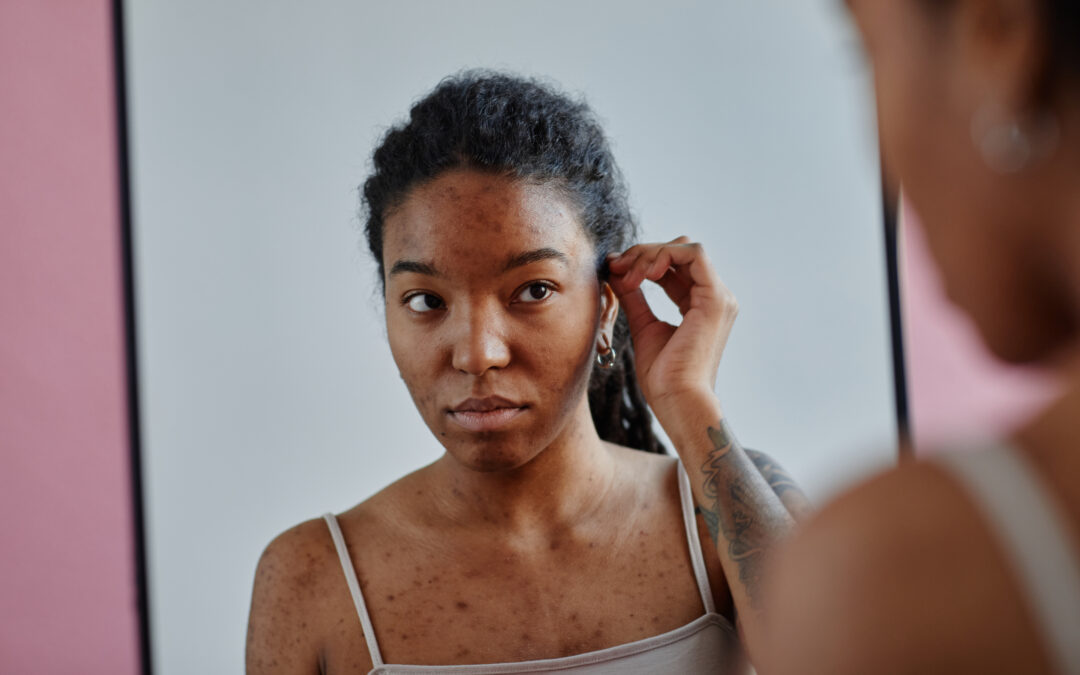Eating Disorders are extremely complicated illnesses. In fact, we still don’t fully understand what causes them.
However, we do know that many things are involved, including biological, psychological, and sociocultural factors.
Additionally, these factors may interact differently in different people, so two people with the same eating disorder can have very diverse perspectives, experiences, and symptoms. Still, researchers have found broad similarities in understanding some of the major risks for developing eating disorders. From having specific genes that predispose someone to have an eating disorder to the things we see on our phones daily, eating disorders can develop for a multitude of reasons.
The factors listed below may be applicable to those with anorexia nervosa, bulimia nervosa, binge eating disorder, or OSFED:1

Biological Factors
- Having a close relative who suffers from an eating disorder. According to family studies, having a first-degree relative (such as a parent or sibling) with an eating disorder raises a person’s risk of developing an eating disorder.
- Dieting history. The development of binge eating is linked to a history of dieting and other weight-control methods.
- Negative energy balance. A negative energy balance occurs when you burn more calories than you consume. Many people report that their disorder began with deliberate efforts to diet or restrict the amount and/or type of food they were eating in the form of dieting; other causes can include growth spurts, illness, and intense athletic training.
Physiological Factors
- Perfectionism. Particularly the kind of perfectionism known as self-oriented perfectionism, which entails placing unreasonably high standards for yourself, is one of the main risk factors for eating disorders.
- Discomfort with one’s body image. The concept of body image encompasses how you feel about and in your body. Even though it’s sadly not uncommon to dislike how you look, eating disorder sufferers are more likely to report higher degrees of body image dissatisfaction and an internalization of the beauty ideal.
- Personal history of an anxiety disorder. According to research, a significant subset of people with eating disorders, including two-thirds of those with anorexia, had symptoms of an anxiety disorder (such as generalized anxiety, social phobia, and obsessive-compulsive disorder) prior to the onset of their eating disorder.
Social Factors
- Weight stigma. Researchers have found that being exposed to the message that being thinner is “superior” can cause body dissatisfaction, which can result in eating disorders. Weight stigma, which is harmful and widespread in our culture, is discrimination or stereotyping based on a person’s weight.
- Acculturation. Because of the complex relationships between stress, acculturation, and body image, people from racial and ethnic minority groups, particularly those who are undergoing rapid Westernization, may be more likely to develop an eating disorder. Women in Fiji who had previously felt comfortable with their bodies and eating habits began experiencing major issues 3 years after western television was introduced to the country: 74% felt “too heavy;” 11% of people who self-induced vomiting used diets to lose weight, and 29% were at risk for developing clinical eating disorders.
- Bullying or teasing. Being mocked or bullied, especially because of weight, is becoming a more and more common eating disorder risk factor. 60% of those affected by eating disorders said that bullying contributed to the development of their eating disorder.

Summary
Although we still don’t fully understand what causes eating disorders, it’s important to understand that many factors typically work collectively in the development of one. For example, bullying or teasing (social factors) can lead to poor body image (psychological factor) and chronic dieting (biological factor) – which may lead to the development of an eating disorder. Since not all factors are within our control, it is important to focus on the ones we can actively work on. In the context of social factors, learn more about weight stigma, filter your intake of media, challenge your appearance ideals, and disengage with diet talk.
If you think you might have an eating disorder or disordered eating, we are here to help. Learn more about our team and the services we provide here!
If you or a loved one are coping with an eating disorder, contact the National Eating Disorders Association (NEDA) Helpline for support at 1-800-931-2237.
Reference
- Risk Factors. Nationaleatingdisorders.org. Retrieved January 12, 2023.






0 Comments